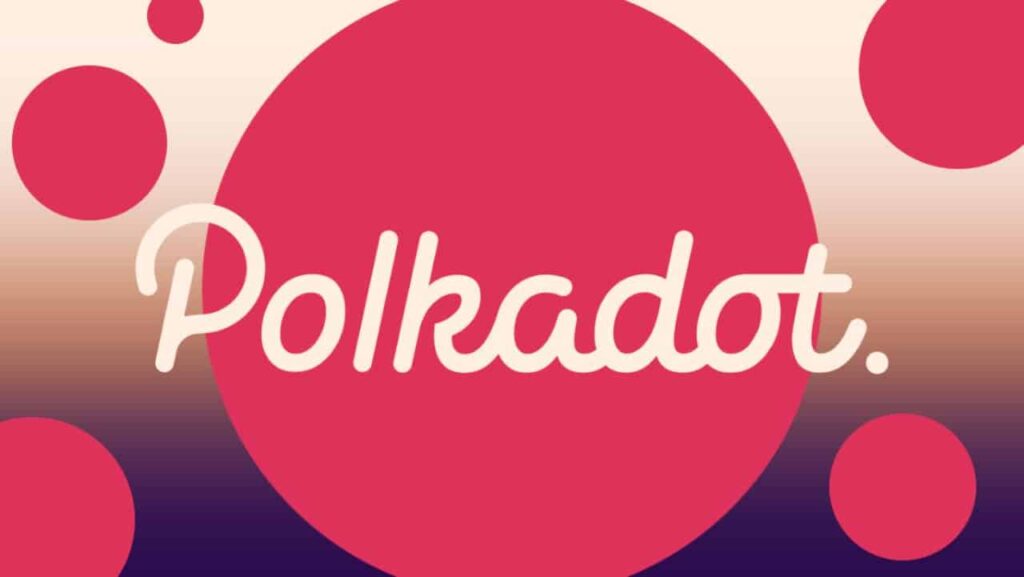Polkadot (DOT) is a revolutionary cryptocurrency and blockchain platform designed to facilitate seamless communication and interoperability between different blockchains. Created by Dr. Gavin Wood, one of the co-founders of Ethereum, Polkadot introduces a novel approach to decentralized networks, aiming to overcome scalability, security, and governance challenges.

Key Features of Polkadot:
- Interoperability: Polkadot’s primary mission is to enable diverse blockchains to connect and share information. Its relay chain serves as the backbone, providing a secure and scalable environment for various specialized blockchains, known as parachains, to communicate.
- Parachains: These individual blockchains connected to Polkadot can be customized for specific use cases, fostering innovation and specialization. Parachains can run diverse consensus mechanisms and have unique features tailored to their purposes.
- Shared Security: Polkadot introduces a shared security model, where all parachains benefit from the security of the relay chain. This interconnected security framework enhances the overall robustness of the entire network.
- Nominated Proof-of-Stake (NPoS): Polkadot utilizes a consensus mechanism called Nominated Proof-of-Stake. DOT holders can stake their tokens or nominate validators, contributing to network security and earning rewards in return.
- Governance: DOT holders actively participate in the decentralized governance of the network. They can propose and vote on upgrades, changes to parameters, and other crucial decisions, ensuring a dynamic and inclusive decision-making process.
A Step-by-Step Guide to Buying, Staking, and Pooling DOT on Polkadot
DOT, which stands for Polkadot, is a blockchain platform that allows different blockchains to transfer messages and value in a trust-free fashion. If you’re interested in obtaining DOT, you can either purchase it on a cryptocurrency exchange or participate in the network by becoming a validator or nominator to earn DOT through staking. Here’s a basic overview:
1. Buy DOT on an Exchange
- Create a Wallet: Before you buy DOT, you’ll need a cryptocurrency wallet that supports Polkadot. You can use wallets like Polkadot.js or others compatible with DOT.
- Choose a Cryptocurrency Exchange: Select a reputable cryptocurrency exchange that supports Polkadot. Some popular exchanges where you can buy DOT include Binance, Kraken, and others.
- Buy DOT: Deposit funds into your exchange account and use them to buy DOT. Follow the instructions on the exchange platform to complete the purchase.
- Withdraw to Your Wallet: For security reasons, it’s recommended to move your DOT from the exchange to your personal wallet.
2. Staking
Staking involves participating in the network’s consensus mechanism, helping to validate transactions and secure the network. In the case of Polkadot, you can stake your DOT to earn additional DOT as rewards. There are two roles you can take: validator or nominator.
- Validator: Validators are nodes that participate in block production and transaction validation. However, becoming a validator typically requires a significant amount of DOT, technical expertise, and responsibility.
- Nominator: If you don’t have enough DOT to become a validator, you can nominate a validator. Nominators essentially back validators by staking their DOT with them. In return, they receive a share of the rewards earned by the validator.
3. Staking Pools
If you have a smaller amount of DOT, you might consider joining a staking pool. Staking pools aggregate smaller amounts of DOT from multiple users to meet the minimum requirements for staking. Rewards are then distributed proportionally to each contributor based on their stake.
Important Considerations:
- Security: Ensure that your wallet and staking setup are secure. Use hardware wallets or reputable software wallets.
- Research: Understand the risks and rewards associated with staking. Research validators or staking pools before committing your funds.
- Network Participation: Staking involves locking up your funds for a period, and there might be conditions for withdrawing. Be aware of these conditions.
How To Engage with Polkadot?

Polkadot doesn’t use a traditional mining process like Proof-of-Work (PoW) cryptocurrencies such as Bitcoin. Instead, Polkadot utilizes a consensus mechanism called Nominated Proof-of-Stake (NPoS). In NPoS, token holders can stake their DOT (Polkadot’s native cryptocurrency) to participate in the network and earn rewards. Here’s how you can engage with Polkadot:
- Acquire DOT:
- Obtain DOT tokens through a cryptocurrency exchange. Popular exchanges like Binance or Kraken often support DOT.
- Set Up a Wallet:
- Choose a cryptocurrency wallet that supports Polkadot. Options include the official Polkadot.js wallet or other compatible wallets.
- Transfer DOT to Your Wallet:
- After purchasing DOT on the exchange, transfer your tokens to your chosen wallet for security reasons.
- Staking:
- Participate in the staking process by locking up your DOT to contribute to the network’s security and consensus mechanism.
- There are two main roles in staking: Validators and Nominators.
- Validator: Validators are nodes responsible for block production and transaction validation. However, becoming a validator typically requires a significant amount of DOT, technical expertise, and responsibility.
- Nominator: If you don’t have enough DOT to become a validator, you can nominate a validator. Nominators support validators by staking their DOT with them. In return, they receive a share of the rewards earned by the validator.
- Staking Pools:
- If you have a smaller amount of DOT, you can consider joining a staking pool. Staking pools combine DOT from multiple users to meet the minimum requirements for staking. Rewards are distributed proportionally to each contributor based on their stake.
Wrapping Up
In summary, Polkadot’s revolutionary approach to blockchain technology, emphasizing interoperability, scalability, and decentralized governance, sets it apart in the industry. The platform’s parachains and relay chain architecture enhance scalability, while its on-chain governance fosters community involvement. As a promising player in the evolving blockchain space, Polkadot’s potential to drive innovation is undeniable. If you enjoyed this blog, share your thoughts below to contribute to the ongoing discussion on the future of decentralized technologies.